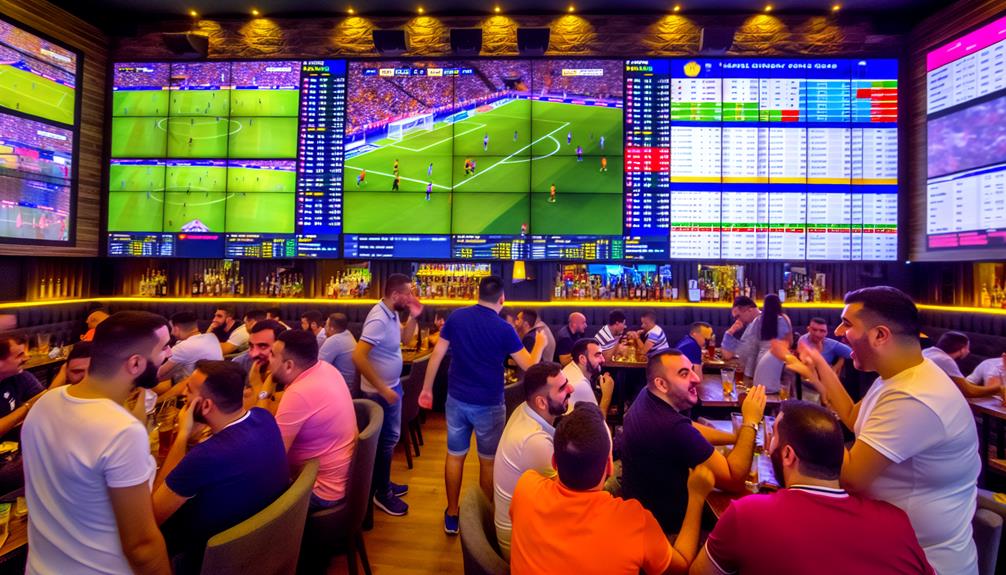When you explore the football betting market, it’s crucial to understand how odds are set and what influences their fluctuations. Bookmakers calculate these odds based on numerous factors, including team performance and public sentiment, creating a dynamic environment that can shift rapidly. As you consider your betting strategy, you’ll find that effective bankroll management and diversification can greatly impact your success. But what are the hidden intricacies that can tilt the odds in your favor, and how can you navigate this complex landscape to maximize your returns?

Understanding Betting Odds
When you immerse yourself in the world of football betting, understanding betting odds is essential for making informed decisions. Odds represent the bookmaker’s assessment of an event’s probability and determine how much you can win relative to your stake.
You’ll typically encounter three formats: decimal, fractional, and moneyline.
Decimal odds, popular in Europe, show the total payout for every unit wagered. For instance, odds of 2.50 mean you’d win $2.50 for every $1 bet.
Fractional odds, often seen in the UK, express profit relative to your stake, so 5/1 means you’d win $5 for every $1 wagered.
Moneyline odds, commonly used in the US, indicate how much you’d need to bet to win $100 (negative odds) or how much you’d win from a $100 bet (positive odds).
Understanding these odds helps you evaluate potential returns and compare different bookmakers.
It’s vital to recognize that odds can fluctuate based on market conditions and public sentiment, so staying informed is key.
Factors Influencing the Market
Analyzing the football betting market reveals a complex interplay of various factors that can greatly influence odds and outcomes.
First and foremost, team form plays an essential role; recent performances can shift public perception and betting behavior. If a team is on a winning streak, you’ll likely see their odds shorten, reflecting increased confidence from bettors.
Injuries also meaningfully impact the market. If a star player is sidelined, you might notice a swift adjustment in the odds, reflecting the team’s diminished chances of winning.
Weather conditions can’t be overlooked either; adverse weather might lead to lower scoring games, prompting changes in total goals betting lines.
Another key factor is betting volume. As more bettors place wagers on a particular outcome, bookmakers adjust the odds to mitigate risk. This dynamic creates an ever-changing landscape, where your timing can be just as important as the information you have.
Lastly, external influences like media coverage, expert opinions, and even social media buzz can sway public sentiment, further altering the betting landscape.
Understanding these factors allows you to navigate the market more effectively and make informed decisions.
Strategies for Successful Betting
To succeed in football betting, you’ll need to employ effective strategies that go beyond mere luck. Start by researching teams, players, and recent performance trends. Analyze statistics, such as head-to-head records, injuries, and home/away performance, to inform your bets. This data-driven approach helps you make informed decisions rather than relying solely on gut feelings.
Next, focus on bankroll management. Set a budget for your betting activities and stick to it. Divide your bankroll into units to determine how much to wager on each bet, ensuring you don’t risk too much on any single bet. This discipline can protect you from considerable losses during a losing streak.
Consider diversifying your bets as well. Instead of placing all your funds on one match, explore various betting options like match outcomes, over/under goals, or player performances. This spreads your risk and increases your chances of success.
Lastly, stay updated on betting odds and shop around for the best lines. For those looking to deepen their understanding of football betting strategies, clicca qui. Different bookmakers may offer varying odds, and finding better value can greatly impact your profitability over time.